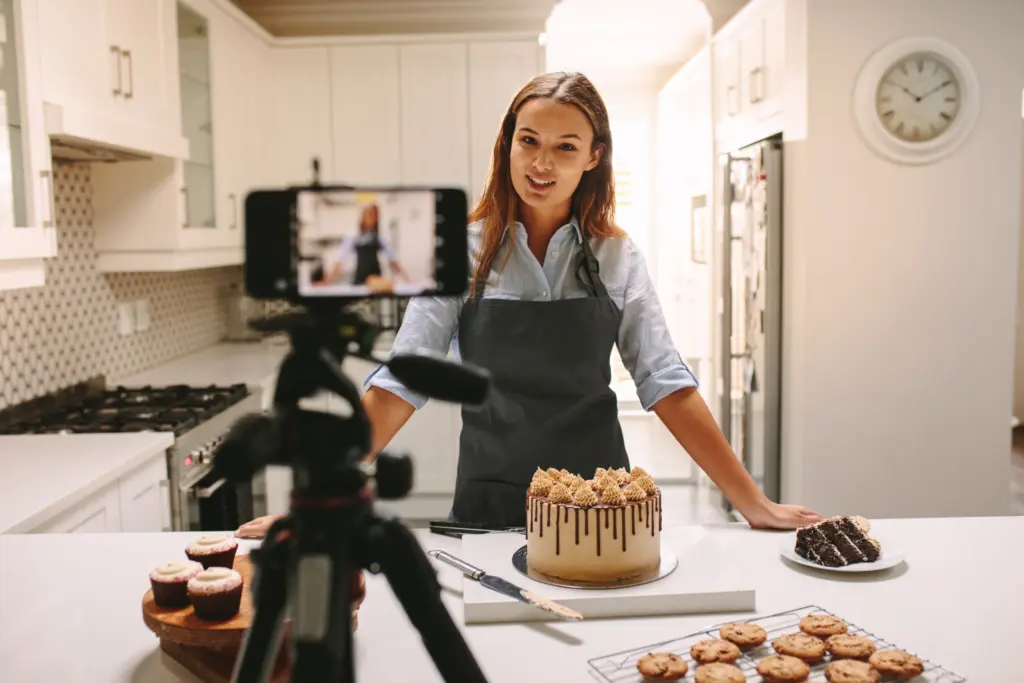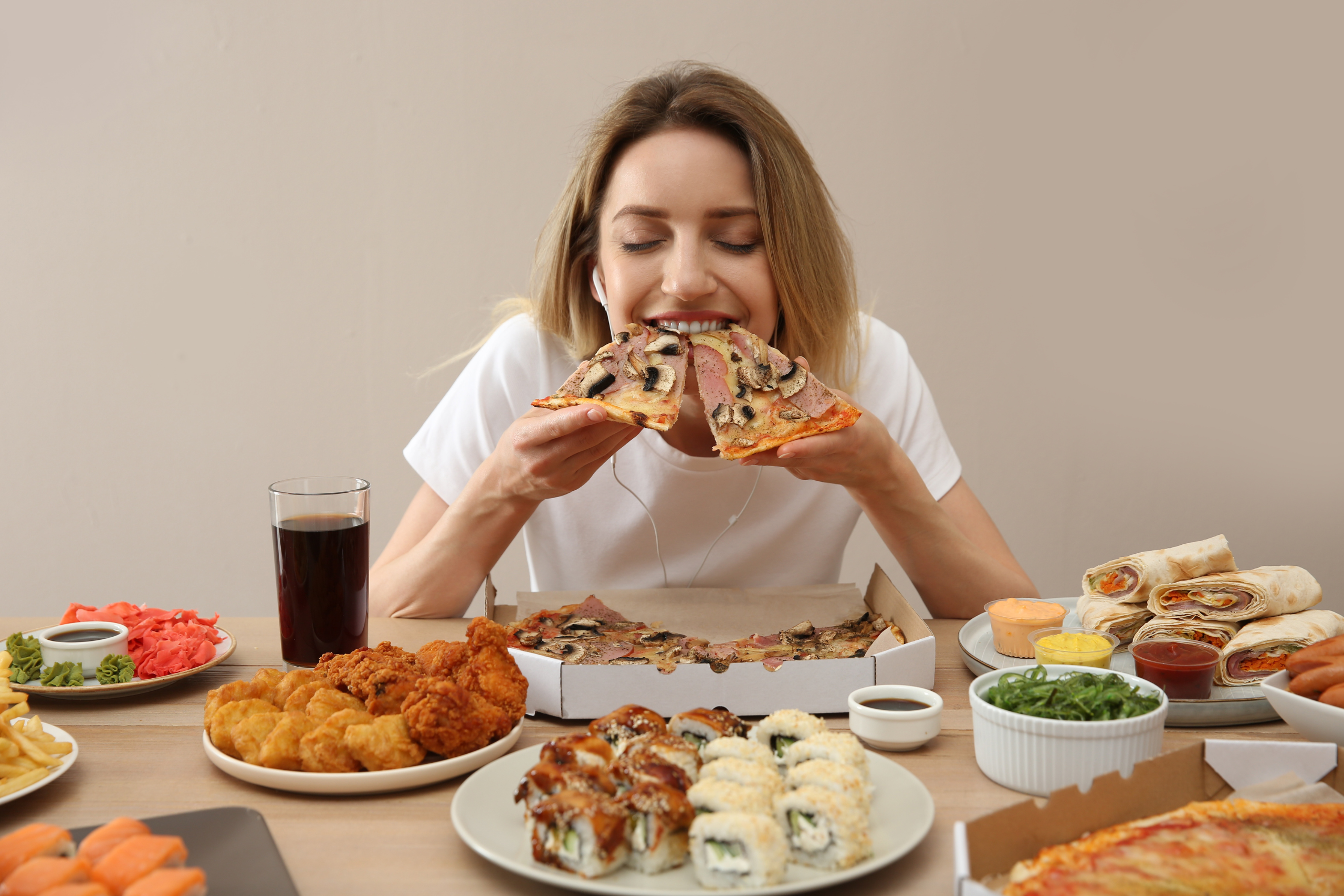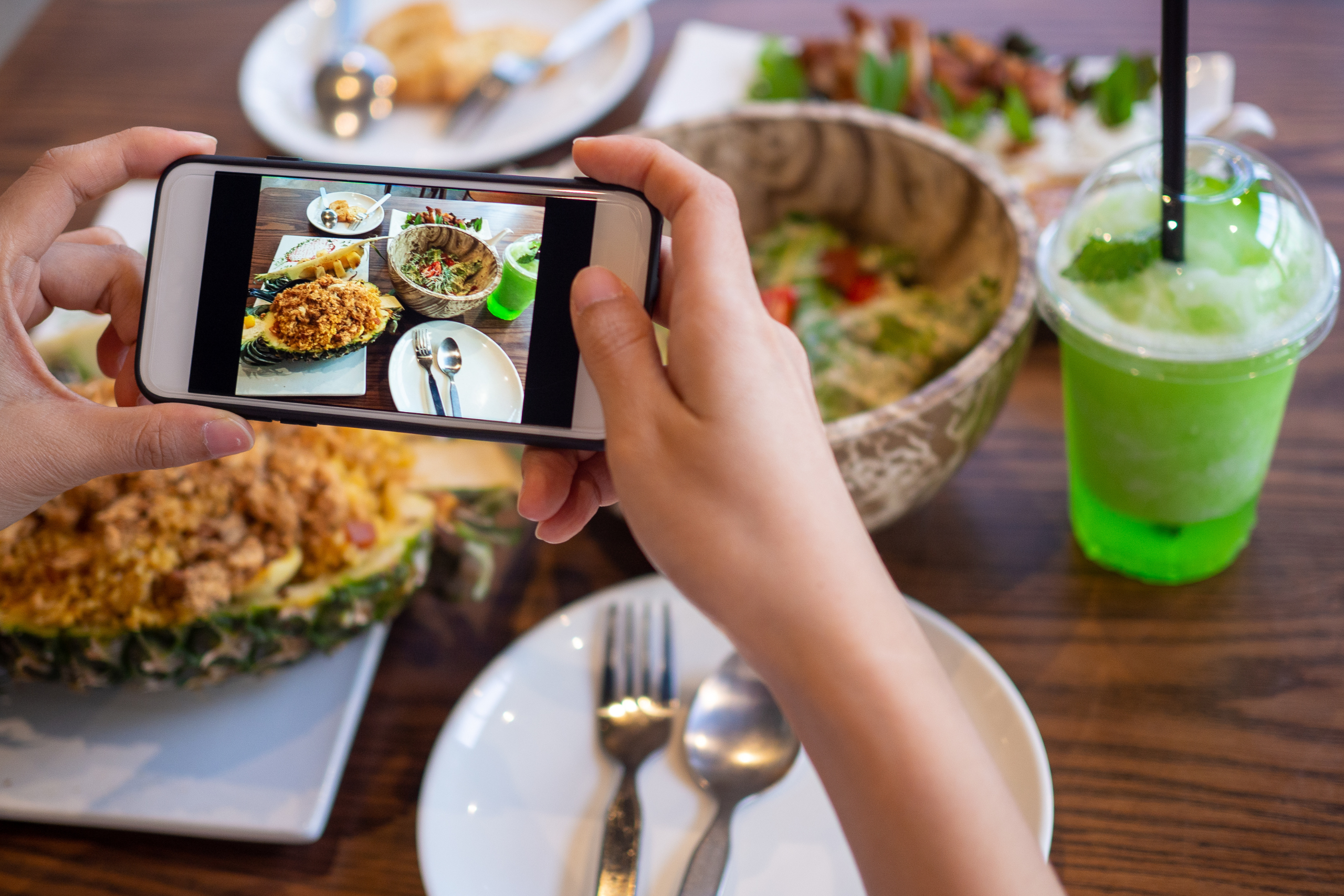So, you have a passion for food and a penchant for sharing your culinary adventures with the world? Starting a food blog might be just the recipe you need to blend your love for food and writing.
Recent findings show that food blogs are among the highest earners in blogging. If you’re passionate about culinary arts and eager to learn how to launch a food blog, you’re in the right spot. We’ll guide you through the entire process, from starting your blog as a side hustle, establishing your brand’s identity, and choosing a domain name to turn your blog into a profitable venture.
Table of Contents
Step 1. Developing Your Brand Identity
With over two billion blogs out there, the competition is stiff, especially in the food blogging world. Therefore, carving out a unique brand identity is vital to stand out. The first step in starting a food blog should be to define your brand identity.
What Shapes Your Brand Identity?
Your brand identity combines your specific niche, the target audience you aim to attract, your message, and the overall experience you offer on your blog. Developing a strong brand identity for your food blog is essential to stand out in a crowded online foodie world. Reflect on your goals for starting a food blog, considering both the business aspects and personal fulfillment.
Choose your food niche.
When it comes to food blogging, choosing a niche that truly tickles your taste buds is essential. While food is your area of focus, this field has many subtopics. Are you a dessert diva, a savory sensation, or a culinary connoisseur? Your niche should align with your passion, but it’s also worth considering the profitability of your chosen category.
Determine your unique perspective by pondering these questions:
- Will your blog feature recipes, or will it be a broader discussion about food?
- Do you plan to concentrate on particular culinary traditions, like Mexican or Mediterranean cuisine?
- Are discussions about dietary choices and lifestyles, such as vegan, keto, or paleo diets, something you’re interested in?
- Do you want to cover everyday, accessible foods, or will you focus on high-end, gourmet dishes?
Know your target audience.
Once you’ve identified your niche, dig deep. Understand your target audience’s preferences and the competitive landscape. What sets your food blog apart from the sea of other food bloggers? The research will be your secret sauce.
Take time to think about your desired image and how you want your audience to perceive you and your brand. Are you approaching them as a friend, mentor, or instructor? Share your personal food journey and experiences with your audience.
When considering your ideal audience, think beyond basic demographics. Consider their behaviors, preferences, family values, and common health issues. Remember, choosing a fitting name and slogan for your blog is crucial to making an immediate connection with your audience.

Step 2. Decide on Your Blogging Platform and Hosting Services
Now, you are ready to start the process of creating your blog.
Before you start blogging, you need a platform to serve your culinary creations. Select a blogging platform that suits your needs. Common options include WordPress, Blogger, Wix, and Medium. Each has its pros and cons, so consider your goals and technical expertise. Some of these platforms are equipped with various tools necessary for site promotion, making it easier to grow your audience. Many blogging platforms also offer domain name purchases directly through their interfaces.
The subsequent step involves securing your domain name and your blog’s online address. Your blog’s domain name is like an appetizer for your readers. It should be memorable and reflect your blog’s theme. You can register a domain through various domain registrars.
Once your domain name is set, the next step is to find a web hosting service. Web hosting is essentially renting space on the internet where your blog will be accessible to visitors. Choose your web host wisely, considering factors like speed, uptime, and customer support. If you choose a self-hosted platform like WordPress.org, you’ll need a web hosting provider. Popular hosting services include Bluehost, SiteGround, and HostGator. Sign up for a hosting plan that suits your needs and budget.
>> READ: How to Make a Website: 10 Steps to Follow
Step 3. Create and Design Your Blog
It’s time to create and design your blog to ensure a great user experience. While coding a site from scratch is an option, it’s labor-intensive and time-consuming. Alternatively, hiring a developer can yield a more refined result but at a higher cost.
A simpler and faster solution for beginners is using a website builder or a dedicated blogging platform. For example, WordPress is a hugely popular choice because of the availability of thousands of predesigned templates and themes (both free and paid) that will save you time and money. Themes are essentially design templates that include elements like page layouts, color schemes, typography, and more, ensuring your blog has a cohesive appearance. Most themes today are mobile-optimized, so they’ll look great on any device. You don’t need to start from scratch, as themes provide a ready-made structure for your website.
For those with the resources and needed special customizations not easily available from pre-made themes, these platforms also offer the option to hire professional website designers to craft your blog.
Integrating Your Brand Standards in Your Blog Design
After deciding on your brand identity, it’s time to use it through various assets for your blog, social media, and other communication channels. Consider elements like your color scheme, font choices, and logo – all crucial in making your blog recognizable. Consistency in branding across all your platforms helps build trust and recognition. Your brand guidelines set the foundation for your blog design.
Select a theme that resonates with your brand’s style. These themes are customizable, so aligning them with your brand identity is usually straightforward.
Use consistent brand colors.
Incorporate your brand’s primary and secondary colors into your website’s color scheme. Ensure these colors are used consistently across the site for headings, buttons, backgrounds, and text.
Use the Right Typography
Choose fonts that align with your brand’s personality. Use these fonts consistently for headings, body text, and other elements throughout your website.
Maintain your Brand Voice
The tone of voice used in your website’s copy should align with your brand’s messaging and values. Whether it’s formal, friendly, or authoritative, consistency is key.
Graphics and Imagery
Use images and graphics that resonate with your brand’s identity. Whether it’s photography style, illustrations, or iconography, they should reflect your brand’s ethos. Choose user interface elements (buttons, forms) that adhere to your brand’s visual style.
By implementing these steps, you’ll create a website representing your brand and providing a consistent and engaging user experience for your audience. Remember, perfecting your blog’s design may take several attempts. Launch your initial version, then continue tweaking the design to find what resonates best.

Step 4. Create Your Blog Content
Now that your food blog is set up, it’s time to create content. Here are some tips for planning, creating, and publishing your posts.
Produce High-Quality Content
Quality is key. This applies to all types of content, be it recipes, reviews, opinion pieces, or personal stories. High quality means both the value of your content and its readability. Engage your readers with compelling headlines, subheadings, and an appealing writing style.
Food blogging isn’t just about recipes; it’s about storytelling. Inject personality into your posts, use descriptive language, and share the stories behind your dishes. Make your readers feel like they’re dining with you.
Incorporate video content on platforms like YouTube and TikTok, such as cooking tutorials or recipe demonstrations. Videos can be highly engaging.
Maintain a Consistent Posting Schedule
Consistency is crucial. Create a posting schedule and stick to it. Regular, reliable content keeps your audience engaged and coming back for more.
A well-organized content calendar is your recipe for success. Plan your posts, including recipe development and testing. Consistency is the key to keeping your readers coming back for seconds.
Decide on a specific day and time for your posts and adhere to it. Regular posting keeps your audience engaged and favors Google’s algorithm. The frequency of your posts should balance with the ability to maintain quality.
Incorporate Keywords
Keywords are vital for organic reach. Conduct keyword research and base your content around what your target audience is searching for, enhancing your site’s organic traffic.
Diversify Your Posts
There’s no one-size-fits-all for blog post length. Mix short posts (around 1,000 words) with longer ones (3,000 words or more) to keep things varied.
Invest in Quality Food Photography
In the world of food blogging, your photos are your main course. Create high-quality food images and photography. Visually appealing images can make your recipes more enticing and shareable on social media.
Quality trumps quantity when it comes to food photography. Invest in a good camera, lenses, and props. Learn about lighting and staging to capture mouthwatering shots that leave your readers drooling.

Step 5. Market Your Blog
Marketing your food blog effectively can help you reach a wider audience and grow your online presence. However, building traffic takes time. Hence, promotion from the outset is crucial.
While billboard advertising may be a bit much for a blog, here are strategies to market your food blog:
Develop a Strong Social Media Presence
Create and maintain active social media accounts on Instagram, Pinterest, and Facebook. Share your passion for cooking, recipes, food photos, and the specific niche or cuisine you focus on. Your authenticity and enthusiasm will resonate with your audience.
Visual content is key in the food blogging world. Invest in high-quality food photography to make your posts visually appealing. Showcase your dishes with enticing images that make your audience crave what you share. Behind-the-scenes glimpses of your kitchen, cooking process, and even personal anecdotes can create a more personal connection with your followers.
Schedule your promotional activities using tools like Buffer or Hootsuite. On publication day, promote your post two to three times across each social platform. Increase promotion frequency during the first week. Continue promoting each post two to three times monthly for the next six months. After a year, update your post with new information and restart the promotion cycle.
Consider using paid ads on social media if your budget allows.
Engage with Your Visitors and Followers.
Use relevant hashtags to increase the discoverability of your posts, and engage with your audience by responding to comments and messages promptly.
Encourage user-generated content by inviting your followers to share their experiences and recipes related to your blog on social media. Repost user-generated content with proper credit.
Engaging with your audience fosters a sense of community and loyalty. Over time, these efforts will help you establish a vibrant and engaged community around your food blog.
SEO Optimization
Optimize your blog posts for search engines (SEO). Use relevant keywords, meta descriptions, and alt tags to improve your blog’s visibility on search engines like Google.
Use analytics tools to track your website’s performance and social media engagement. Adjust your strategies based on data insights.
Collaborate with Others
Collaborate with other food bloggers and influencers in your niche. Partner with food influencers or bloggers in your niche for collaborations, guest posts, or joint promotions. Their audience can become your audience.
Cross-promotions and collaborations can introduce your blog to a broader audience. Remember to use multiple social media platforms that align with your target audience, such as Instagram, Pinterest, and Facebook.
Also, consider collaborations with other newsletter creators for mutual promotion.
Join Food Communities
Join online food communities and forums related to your niche. Share your expertise and blog posts when relevant.
By implementing these strategies and staying dedicated to your food blog, you can effectively market your content, attract a larger audience, and establish yourself as a reputable source in your food niche.

Step 6. Monetize Your Food Blog
Monetizing a food blog can be a rewarding endeavor. Research indicates that food bloggers earn a median monthly income of approximately $9,169, topping the charts in various blogging niches. When starting a food blog, it’s important to consider future monetization strategies.
Here are various ways to generate income from your food blog:
Display Ads
Develop partnerships to display ads and earn revenue. Incorporate display advertising through platforms like Google AdSense or food-specific ad networks. You earn revenue based on the number of ad impressions and clicks on your site’s ads.
Affiliate Marketing
Partner with food-related companies and promote their products in your content through affiliate links. You earn a commission for every sale generated through your referral links. Share honest product recommendations and reviews to build trust with your audience.
Sponsored Content
Collaborate with brands for sponsored posts and recipe development. Brands pay you to feature their products in your content. Create content sponsored by food brands, ensuring relevance to your audience to maintain brand integrity. Ensure that sponsored content aligns with your blog’s niche and audience interests.
Sell Digital Products
Compile your expertise into e-books for sale. Utilize popular posts or outsource the writing to save time. E-books can be an excellent source of passive income.
Create and sell digital products like eCookbooks, meal plans, or cooking courses related to your blog’s niche. Use your expertise to offer valuable resources to your audience.
Offer Cooking Classes or Workshops
Host virtual cooking classes or workshops and charge participants a fee to attend. Share your culinary skills and knowledge with your audience.
Share your knowledge through courses, which are particularly effective if you focus on recipes or dietary advice.
Subscription Model
Implement a subscription-based model where you offer premium content, exclusive recipes, or a members-only community for a monthly fee.
Merchandise Sales
Design and sell food-related merchandise like branded kitchenware, apparel, or food-related products featuring your blog’s logo or designs. Use your blog as a platform to sell your own physical products, either on your site or through other e-commerce channels.
Food Photography Services
If you excel in food photography, offer your services to restaurants, food businesses, or fellow food bloggers looking to enhance their visual content.
Freelance Writing and Recipe Development
Write for other publications or blogs and offer recipe development services to food-related businesses.
Cooking Workshops and Events
Host in-person or virtual cooking workshops, pop-up dining experiences, or food-related events that participants pay to attend.
To monetize your food blog successfully, focus on providing valuable content to your audience, maintaining authenticity, and building a loyal readership. Monetization becomes viable once your blog attracts numerous unique monthly visitors. However, start laying the groundwork early by building partnerships, growing a loyal audience, and developing e-books and courses. Diversify your income streams and tailor your monetization strategy to suit your niche and audience preferences.

9 Essential Tips for Successful Food Blogging
Starting a food blog is an exciting journey into the world of culinary creativity and sharing your passion for food with others. However, to succeed in the competitive realm of food blogging, it’s crucial to have a solid foundation and the right strategies.
Here are the key ingredients for your food blog to succeed:
- Authenticity: Post original recipes or write about your experiences with restaurants, diets, or unique foods.
- Regular Posting: Maintaining a consistent posting schedule is crucial for audience engagement and SEO.
- Patience: Understand that growing a blog takes time, even with quality content and engaging visuals.
- Personal Touch: Let your personality shine through in your blog posts to differentiate from competitors.
- Engagement: Actively respond to comments on your blog with additional valuable insights.
- Networking: Connect with fellow food bloggers, comment on their blogs, and share their content. This often leads to reciprocal promotion.
- Creativity: Use high-quality images, with studies suggesting that posts with over ten images yield better engagement. This should be natural for a food blog.
- User-Friendly Design: Ensure your blog is easy to follow, share, and comment on.
- SEO Knowledge: Invest time learning and applying SEO techniques to your blog’s descriptions, page titles, and headlines.
‘FAQs (Frequently Asked Questions)
1. To start a food blog, must I be a professional chef?
Not at all! While culinary expertise is a plus, anyone with a passion for food and a willingness to learn can start a successful food blog.
2. How long does earning money from a food blog take?
It varies, but most bloggers earn income within 6 months to a year of consistent blogging and audience growth.
3. Is investing in expensive photography equipment for food blogging necessary?
While professional equipment can enhance your photos, you can start with a smartphone and gradually invest in better gear as your blog grows.
4. Can I blog about food without sharing recipes?
Absolutely! You can focus on restaurant reviews, food photography tips, travel and food experiences, or any other aspect of the culinary world that interests you.
5. How often should I publish new content on my food blog?
Consistency is key, but it’s more important to maintain quality over quantity. Aim for at least one high-quality post per week, and adjust your schedule based on your availability and audience engagement.
Wrap Up
If you’re passionate about the food industry, starting a food blog can be a fulfilling and profitable endeavor. Follow the steps above to launch your food blogging journey confidently and clearly. If you are ready to turn food blogging into a full-time business, read our article How to Turn Your Side Hustle into a Full-Time Business.


5 thoughts on “How to Start a Food Blog”